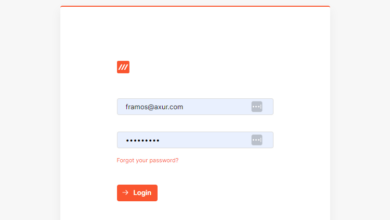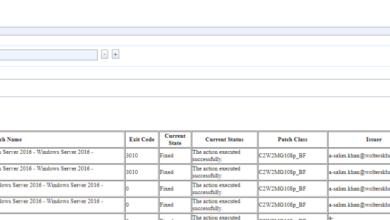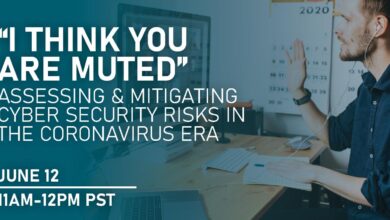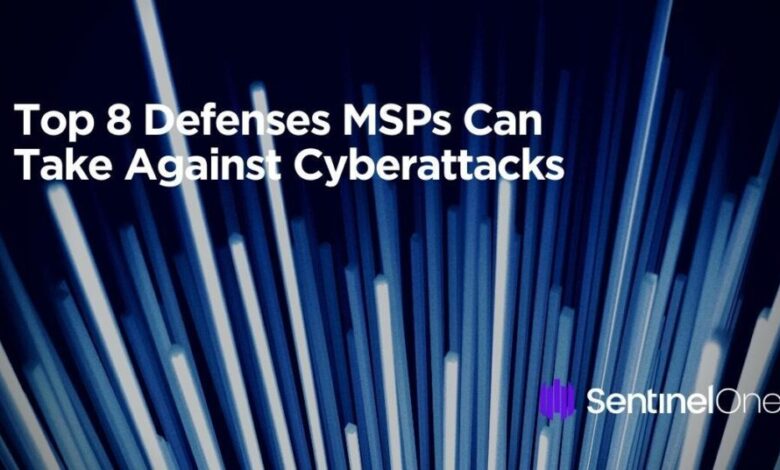
How MSPs Can Defend Against Modern Cyberattacks
How MSPs can defend against modern cyberattacks is a crucial question in today’s digital landscape. The constant evolution of cyber threats means that Managed Service Providers (MSPs) need to be proactive and adaptable to protect themselves and their clients. From sophisticated ransomware to subtle phishing scams, the attack surface is vast, and the consequences of a successful breach can be devastating, impacting not only financial stability but also reputation and client trust.
This post dives deep into the strategies and technologies MSPs need to employ to stay ahead of the curve.
We’ll explore a multi-faceted approach to cybersecurity, encompassing proactive security measures like robust patching, multi-factor authentication, and comprehensive security awareness training. We’ll then delve into threat detection and response, covering SIEM systems, EDR solutions, and incident response planning. Data backup and recovery, a critical component of any robust security strategy, will be examined, along with the importance of compliance standards and managing third-party risks.
Finally, we’ll look at advanced threat protection technologies to safeguard against the most sophisticated attacks.
Proactive Security Measures for MSPs: How Msps Can Defend Against Modern Cyberattacks
Protecting your clients and your own business from modern cyberattacks requires a proactive, multi-layered approach. MSPs are prime targets due to their access to numerous client systems, making robust security practices not just advisable, but essential for survival. This means moving beyond reactive measures and implementing a comprehensive strategy that anticipates and mitigates threats before they can cause damage.
Common Vulnerabilities Exploited in Modern Cyberattacks Targeting MSPs
MSPs face a unique set of vulnerabilities. Attackers often target the MSP itself to gain access to multiple clients simultaneously, a tactic known as a “supply chain attack.” Commonly exploited vulnerabilities include weak or reused passwords, outdated software (especially on critical infrastructure like Remote Monitoring and Management (RMM) tools), and insufficient access controls. Phishing attacks targeting MSP employees are also incredibly effective, as a compromised employee can provide attackers with a gateway to numerous client networks.
Furthermore, unpatched vulnerabilities in commonly used software like Microsoft Exchange or other widely-deployed applications represent significant entry points. Finally, inadequate security awareness training leaves employees vulnerable to social engineering tactics.
Multi-Factor Authentication (MFA) Implementation
Implementing multi-factor authentication (MFA) across all client and internal systems is non-negotiable. MFA adds an extra layer of security by requiring users to provide multiple forms of authentication, such as a password and a code from a mobile authenticator app. This significantly reduces the risk of unauthorized access, even if passwords are compromised. For clients, clear and concise communication about the benefits and implementation of MFA is crucial to ensure adoption.
For internal systems, strong enforcement is key, with no exceptions for administrative users. Consider using a centralized MFA solution to streamline management and reporting across all systems.
Robust Patching and Vulnerability Management Strategy, How msps can defend against modern cyberattacks
A robust patching and vulnerability management strategy is vital. This goes beyond simply installing updates as they become available. It requires a proactive approach involving automated vulnerability scanning, prioritized patching based on risk assessment, and regular security audits. Employing automated patching tools can significantly reduce the time and effort required to update systems, minimizing the window of vulnerability.
Prioritizing patches based on the severity of the vulnerabilities identified is critical to focus resources where they are most needed. Regular penetration testing and vulnerability assessments should be conducted to identify and address any weaknesses that automated tools may miss.
Regular Security Awareness Training
Regular security awareness training is paramount for both MSP employees and client staff. This training should cover various topics, including phishing awareness, password security, social engineering tactics, and safe browsing practices. An effective training program uses a blended approach including online modules, simulated phishing attacks, and regular refresher sessions.
Example Security Awareness Training Module: Phishing Awareness
This module focuses on identifying and avoiding phishing attacks. It begins with a short video demonstrating common phishing techniques, followed by interactive quizzes testing knowledge on identifying suspicious emails. A simulated phishing attack is then deployed, allowing employees to experience a real-world scenario and learn from their mistakes. Finally, a downloadable guide provides practical tips and best practices for identifying and reporting phishing attempts.
The module concludes with a post-training assessment to reinforce learning and identify knowledge gaps. This layered approach ensures that the training is engaging, practical, and effective in improving employee awareness.
Threat Detection and Response

Effective threat detection and response is paramount for MSPs operating in today’s complex threat landscape. Failing to proactively monitor and swiftly react to security incidents can lead to significant financial losses, reputational damage, and legal repercussions for both the MSP and its clients. A robust strategy encompassing proactive security measures, coupled with a strong detection and response plan, is crucial for survival.
Implementing a Security Information and Event Management (SIEM) System
A SIEM system centralizes log data from various sources across your network and client environments, providing a single pane of glass for security monitoring. Effective implementation requires careful planning and execution. This includes identifying the right SIEM solution for your scale and needs, considering factors such as scalability, ease of use, and integration capabilities with existing tools. Furthermore, proper configuration of the SIEM is critical to ensure accurate and timely alerts.
Without proper tuning, a SIEM can become overwhelmed with noise, rendering it ineffective.
Detecting and Responding to Ransomware Attacks: A Step-by-Step Procedure
Ransomware remains a persistent and evolving threat. A well-defined incident response plan is crucial for minimizing its impact. The following steps Artikel a robust response strategy:
- Containment: Immediately isolate affected systems from the network to prevent further spread. This may involve disconnecting infected machines from the internet and internal network segments.
- Eradication: Begin the process of removing the ransomware malware. This may involve using specialized ransomware removal tools, reinstalling operating systems, or restoring from backups.
- Recovery: Restore data from clean backups. Verify data integrity after restoration. Regular, tested backups are crucial here.
- Analysis: Investigate the attack’s origin and method. This involves analyzing logs, network traffic, and the malware itself to identify vulnerabilities and prevent future incidents.
- Post-Incident Activity: Review security policies and procedures, identify gaps, and implement necessary improvements to strengthen defenses against future attacks. This includes employee training on security best practices.
- Communication: Maintain open communication with affected clients, keeping them informed of the situation and the steps being taken to resolve it. Transparency is key in maintaining trust.
Utilizing Endpoint Detection and Response (EDR) Solutions
EDR solutions provide advanced threat detection and response capabilities at the endpoint level. They offer a significant improvement over traditional antivirus software by actively monitoring system activity for malicious behavior. Key features to look for in an EDR solution include:
- Real-time threat detection: The ability to detect and alert on malicious activity as it occurs.
- Behavioral analysis: The capacity to analyze system behavior to identify anomalies indicative of malicious activity.
- Automated response capabilities: The ability to automatically take action, such as isolating infected systems or blocking malicious processes.
- Centralized management: A centralized console for managing and monitoring all endpoints.
- Forensic investigation tools: Capabilities to collect and analyze forensic data to determine the root cause of an incident.
- Integration with SIEM: Seamless integration with your SIEM system for enhanced threat detection and response.
Incident Response Process: Communication and Escalation
A well-defined incident response process is critical for effective threat management. This process should clearly Artikel communication protocols and escalation procedures. Clear communication channels should be established between the MSP, its clients, and relevant stakeholders. This ensures timely and accurate information dissemination during an incident. Escalation procedures should be defined to ensure that incidents are escalated appropriately based on their severity and impact.
For example, a critical security breach should be escalated immediately to senior management and potentially law enforcement. Regular tabletop exercises and incident response drills can help refine this process and ensure preparedness.
Data Backup and Recovery
Data backup and recovery is arguably the most critical aspect of cybersecurity for MSPs. A robust strategy ensures business continuity in the face of ransomware attacks, hardware failures, or even natural disasters. Without a reliable backup and recovery plan, a single incident could cripple your business and severely damage your clients’ trust. This section will delve into the best practices for ensuring your data is safe and recoverable.
The 3-2-1 Backup Rule
The 3-2-1 backup rule is a cornerstone of any effective data protection strategy. It states that you should have at least three copies of your data, stored on two different media types, with one copy stored offsite. This redundancy protects against data loss from various sources, such as hardware failure, malware infection, or physical damage.For example, an MSP might maintain one copy of client data on a local server, a second copy on a cloud storage service like AWS S3 or Azure Blob Storage, and a third copy on an external hard drive stored in a physically separate location.
If the local server fails, the cloud and offsite backups remain accessible. If a ransomware attack encrypts the local and cloud copies, the offsite backup provides a clean recovery point.
Backup Methods
Different backup methods offer varying advantages and disadvantages. Choosing the right combination depends on factors like budget, recovery time objectives (RTO), and recovery point objectives (RPO).
| Backup Method | Advantages | Disadvantages | Example Use Case |
|---|---|---|---|
| Local Backup (e.g., external hard drive) | Cost-effective, relatively fast access to data | Vulnerable to physical damage, theft, and on-site disasters. Limited storage capacity. | Backing up critical server configurations locally for quick restoration in case of minor issues. |
| Cloud Backup (e.g., AWS, Azure, Google Cloud) | Scalable storage, offsite protection, often automated. | Can be expensive depending on storage needs, relies on internet connectivity for access. Potential for vendor lock-in. | Backing up large amounts of client data for disaster recovery and long-term archival. |
| Offsite Backup (e.g., external hard drive at a separate location, tape storage) | Protection against on-site disasters, such as fire or flood. | Can be slower to access than local or cloud backups. Requires careful management and security. | Storing a secondary copy of critical data in a geographically separate location for ultimate protection against catastrophic events. |
| Hybrid Backup | Combines the benefits of multiple methods for a balanced approach | Requires more complex management | Using cloud for long-term storage and local backups for quick recovery of frequently accessed data. |
Disaster Recovery Plan
A comprehensive disaster recovery plan Artikels procedures for restoring business operations after a disruptive event. This plan should include:* Business Continuity Strategies: Defining critical business functions, identifying alternative resources (e.g., hot sites, cold sites), and establishing communication protocols. This might involve pre-arranged agreements with a co-location facility or cloud provider to ensure immediate access to alternative computing resources.
Data Recovery Procedures
Detailed steps for restoring data from backups, including testing and validation procedures. This should include specifying the order of recovery, prioritizing critical systems and data, and defining roles and responsibilities for each team member.
Communication Plan
Outlining how to communicate with clients, staff, and other stakeholders during and after a disaster. This could include pre-written templates for notifications and a designated communication point of contact.
Testing and Updates
Regularly testing the disaster recovery plan to ensure its effectiveness and updating it as needed. Regular drills and simulated disaster scenarios are crucial to validate the plan’s effectiveness and identify any weaknesses.
Backup Integrity and Recoverability Verification Checklist
Regularly verifying the integrity and recoverability of backups is crucial. This checklist helps ensure your backups are reliable:* Regular Backup Verification: Perform regular test restores of critical data sets.
Backup Media Testing
Check the health and functionality of your backup storage media.
Data Integrity Checks
Use checksums or hashing algorithms to verify data integrity.
Recovery Time Objective (RTO) and Recovery Point Objective (RPO) Monitoring
Track and analyze your RTO and RPO to ensure they align with business requirements.
Documentation
Maintain comprehensive documentation of your backup and recovery procedures.
Security Auditing and Compliance

Regular security audits and adherence to compliance standards are crucial for MSPs to maintain client trust and mitigate risks. Failing to do so can lead to significant financial and reputational damage, not to mention legal repercussions. A robust security auditing program, combined with a commitment to relevant compliance frameworks, forms the bedrock of a strong security posture.
Key Compliance Standards for MSPs
Several key compliance standards are particularly relevant to Managed Service Providers (MSPs), guiding their security practices and ensuring they meet industry best practices. These standards offer frameworks for implementing and managing information security, helping MSPs demonstrate their commitment to protecting client data. Failure to comply can result in penalties, loss of business, and damage to reputation.
- ISO 27001: This internationally recognized standard provides a framework for establishing, implementing, maintaining, and continually improving an information security management system (ISMS). It covers a wide range of security controls, from risk assessment and policy development to incident management and business continuity planning. Certification demonstrates a commitment to robust security practices.
- SOC 2 (System and Organization Controls 2): SOC 2 reports provide assurance on the security, availability, processing integrity, confidentiality, and privacy of a service provider’s systems. It’s often a requirement for MSPs working with clients in regulated industries, demonstrating adherence to specific trust service criteria. Different reports (Type I and Type II) offer varying levels of assurance.
- NIST Cybersecurity Framework: While not a certification, the NIST Cybersecurity Framework provides a voluntary framework for managing cybersecurity risk. MSPs often align their security practices with the NIST framework to demonstrate a proactive approach to risk management. This framework focuses on identifying, assessing, managing, and mitigating cybersecurity risks.
Conducting Regular Security Audits
Regular security audits are essential for identifying vulnerabilities and weaknesses in an MSP’s security posture. These audits should be conducted proactively, not just reactively after an incident. A comprehensive audit program includes both internal and external assessments. Internal audits involve self-assessment and review of existing security controls. External audits, conducted by third-party security experts, provide an independent and objective view of the MSP’s security posture.
The frequency of audits depends on the size and complexity of the MSP’s operations and the sensitivity of the data they handle.
- Planning and Scoping: Define the scope of the audit, identifying systems, processes, and data to be included.
- Vulnerability Scanning: Utilize automated tools to identify known vulnerabilities in systems and applications.
- Penetration Testing: Simulate real-world attacks to assess the effectiveness of security controls.
- Policy and Procedure Review: Evaluate the adequacy and effectiveness of existing security policies and procedures.
- Incident Response Plan Review: Assess the preparedness of the MSP to handle security incidents.
- Reporting and Remediation: Document findings, prioritize vulnerabilities, and develop a remediation plan.
Documenting Security Policies and Procedures
Well-documented security policies and procedures are crucial for maintaining a consistent and effective security posture. These documents should clearly define roles, responsibilities, and processes related to all aspects of information security. Regular reviews and updates are essential to ensure they remain relevant and effective. The documentation should be readily accessible to all relevant personnel.
Sample Security Audit Report Template
A security audit report should clearly present the findings of the audit, including identified vulnerabilities, their severity, and recommended remediation actions. The report should also include a summary of the audit methodology and scope. Below is a sample template:
| Section | Content |
|---|---|
| Executive Summary | Overview of the audit, key findings, and recommendations. |
| Methodology | Description of the audit process, tools used, and scope. |
| Findings | Detailed description of identified vulnerabilities, their severity (e.g., critical, high, medium, low), and potential impact. |
| Recommendations | Specific and actionable recommendations for addressing identified vulnerabilities. |
| Appendix | Supporting documentation, such as vulnerability scan reports and penetration test results. |
Managing Third-Party Risk
In today’s interconnected world, MSPs rely heavily on third-party vendors for various services, from software and hardware to cloud infrastructure and security solutions. This reliance, however, introduces significant security risks. A single vulnerability in a vendor’s system can cascade through the entire MSP ecosystem, impacting numerous clients. Effective third-party risk management is therefore paramount for maintaining the security and reputation of an MSP.
Failing to adequately manage these risks can lead to significant financial losses, legal repercussions, and damage to client trust.Secure vendor management practices are essential for mitigating the risks associated with third-party relationships. This involves a comprehensive approach that encompasses the entire lifecycle of the vendor relationship, from initial selection and due diligence to ongoing monitoring and termination. A robust program ensures that only vetted and secure vendors are engaged, and that their ongoing security posture remains aligned with the MSP’s own security standards.
Assessing Third-Party Vendor Security Posture
Assessing the security posture of third-party vendors requires a multi-faceted approach. This begins with a thorough review of their security policies and procedures, including their incident response plan and compliance certifications (such as ISO 27001 or SOC 2). A detailed questionnaire, tailored to the specific services provided by the vendor, should be used to gather information on their security controls, risk management practices, and incident reporting procedures.
Further investigation might include penetration testing or vulnerability assessments to identify potential weaknesses in their systems. It’s crucial to verify the vendor’s claims and independently assess their security effectiveness. For example, an MSP might request evidence of regular security audits or penetration testing reports, and compare the vendor’s security practices against industry best practices and regulatory requirements.
The ultimate goal is to obtain a clear understanding of the vendor’s security capabilities and their ability to protect sensitive client data.
Managing Third-Party Access Control and Permissions
Controlling access to sensitive client data and systems is critical when working with third-party vendors. The principle of least privilege should be strictly enforced, granting vendors only the minimum necessary access required to perform their duties. This requires a well-defined access control policy that Artikels specific permissions for each vendor and regularly reviews those permissions. Multi-factor authentication (MFA) should be mandatory for all vendor access points, and all access should be carefully monitored and logged.
Regular audits of access logs can help detect unauthorized access attempts or suspicious activity. Furthermore, clear procedures for onboarding and offboarding vendors are essential to ensure secure access throughout the entire vendor lifecycle. For example, when a vendor’s contract is terminated, all access privileges should be immediately revoked and all data transferred to the MSP or deleted securely.
Contractual Clauses to Mitigate Third-Party Risk
Including specific contractual clauses can significantly strengthen an MSP’s position in managing third-party risk. These clauses should clearly define the vendor’s security responsibilities, including their obligations regarding data protection, incident reporting, and compliance with relevant regulations. The contract should stipulate the vendor’s liability in case of a security breach and specify the remedies available to the MSP. It is also crucial to include clauses regarding data ownership, data security breach notification procedures, and the vendor’s commitment to maintaining appropriate insurance coverage.
For example, a contract might include a clause requiring the vendor to notify the MSP within a specified timeframe of any security incident that could impact the MSP’s clients, and a clause detailing the vendor’s obligation to cooperate fully in any investigation or remediation efforts. A well-drafted contract serves as a critical tool for mitigating risk and protecting the MSP and its clients.
Advanced Threat Protection
In today’s complex threat landscape, relying solely on basic security measures is insufficient for MSPs. Advanced threat protection is crucial for proactively identifying and mitigating sophisticated attacks that can bypass traditional security tools. This involves leveraging cutting-edge technologies and strategies to stay ahead of evolving cyber threats.Advanced threat protection technologies like sandboxing and machine learning offer significant benefits in bolstering an MSP’s security posture.
Sandboxing allows suspicious files and applications to be executed in a controlled, isolated environment, preventing malware from infecting the wider network. Machine learning algorithms analyze vast amounts of data to identify patterns and anomalies indicative of malicious activity, enabling quicker detection and response. This proactive approach significantly reduces the impact of successful breaches.
Sandboxing and Machine Learning
Sandboxing creates a virtual environment where potentially harmful files or applications can be run without affecting the main system. If the file is malicious, its actions are contained within the sandbox, preventing damage. Machine learning, on the other hand, analyzes network traffic, user behavior, and system logs to identify unusual patterns that might indicate a cyberattack. For example, a machine learning system might detect an unusual login attempt from an unfamiliar location or a sudden spike in data exfiltration attempts.
By combining these technologies, MSPs can gain a powerful defense against zero-day exploits and other advanced threats.
Intrusion Detection and Prevention Systems (IDPS)
Intrusion detection and prevention systems are essential components of a robust security architecture. IDPS continuously monitors network traffic and system activity for suspicious patterns, providing real-time alerts and automatically blocking malicious activity. Effective implementation requires careful configuration and regular updates to ensure the system remains effective against the latest threats. For instance, an IDPS might detect a port scan, indicating a potential intrusion attempt, and automatically block the malicious IP address.
Furthermore, regular tuning of the IDPS based on threat intelligence feeds can improve its accuracy and effectiveness.
Phishing and Social Engineering Detection and Response
Phishing and social engineering attacks remain highly effective due to their reliance on human error. To mitigate this risk, MSPs should implement robust security awareness training programs for their clients. These programs should educate users on how to identify and report suspicious emails, messages, and websites. Technical measures, such as email filtering and anti-phishing solutions, should also be deployed.
Furthermore, incident response plans should be in place to handle situations where phishing attacks are successful. This includes procedures for containing the damage, restoring affected systems, and investigating the breach. Regular simulated phishing campaigns can help assess the effectiveness of training and identify vulnerabilities in the organization’s security awareness.
Securing Remote Access and VPN Connections
With the increasing prevalence of remote work, securing remote access and VPN connections is paramount. MSPs should enforce strong password policies, multi-factor authentication, and regular security audits of VPN configurations. Furthermore, they should use VPNs that employ robust encryption protocols and regularly update their firmware and software to patch security vulnerabilities. Regular security assessments and penetration testing can help identify weaknesses in the remote access infrastructure and ensure that it remains secure.
For example, implementing a zero-trust security model, where every access request is verified regardless of its origin, can significantly enhance security. This layered approach minimizes the risk of unauthorized access and data breaches.
Final Conclusion
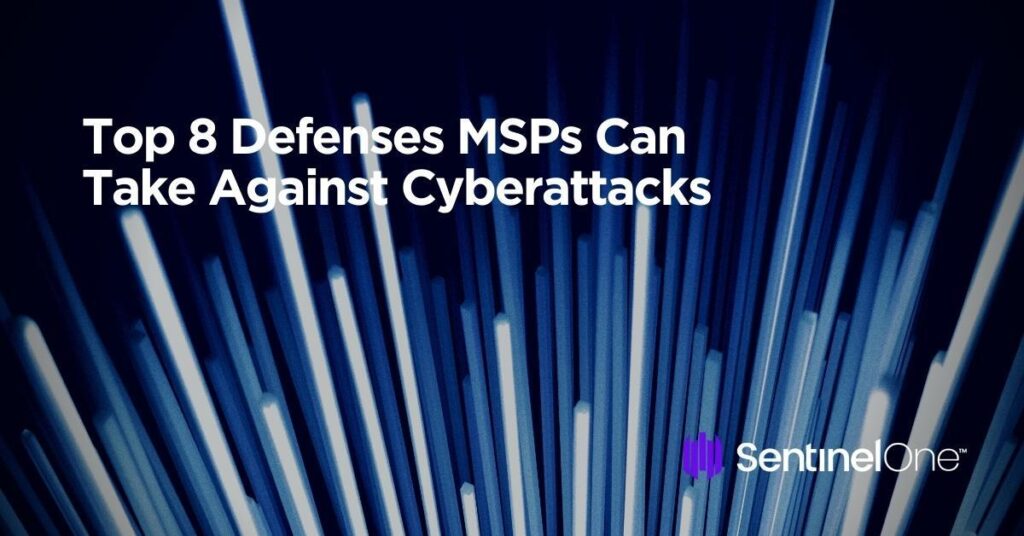
Successfully defending against modern cyberattacks requires a holistic and continuously evolving strategy. It’s not just about implementing the latest technology; it’s about fostering a security-conscious culture within your organization and among your clients. By combining proactive security measures, robust threat detection and response capabilities, reliable data backup and recovery plans, adherence to compliance standards, and vigilant management of third-party risks, MSPs can significantly reduce their vulnerability and protect their clients from the ever-present threat of cybercrime.
Remember, staying informed and adapting to the latest threats is an ongoing process, and vigilance is key.
FAQ Explained
What is the biggest challenge MSPs face in cybersecurity?
Balancing the need for robust security with the demands of managing multiple clients and maintaining cost-effectiveness is a major challenge. Finding skilled personnel and keeping up with the ever-evolving threat landscape are also significant hurdles.
How often should security awareness training be conducted?
Security awareness training should be conducted at least annually, with more frequent updates and reminders on emerging threats. Consider incorporating phishing simulations to test employee vigilance.
What are some cost-effective cybersecurity solutions for MSPs?
Cost-effective solutions include leveraging open-source tools, utilizing managed security service providers (MSSPs) for certain functions, and focusing on strong fundamental security practices before investing in expensive advanced technologies.
How can MSPs demonstrate compliance to clients?
Regular security audits, documented security policies and procedures, and certifications like ISO 27001 or SOC 2 provide evidence of compliance and build client trust.

